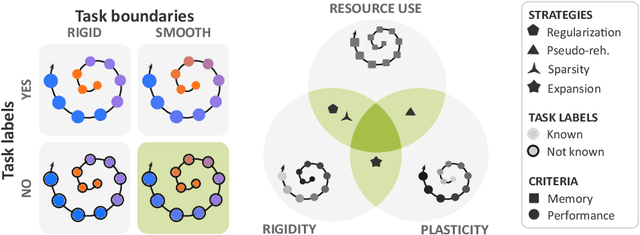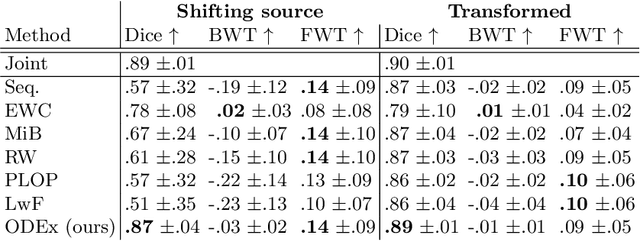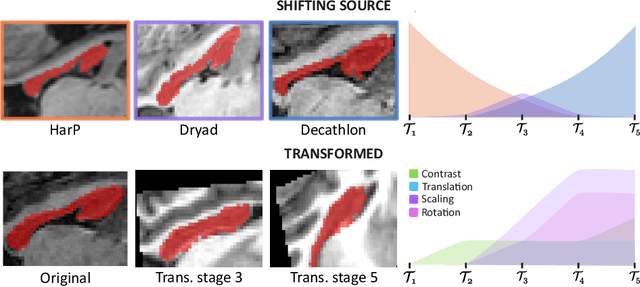Ahmed Othman
Task-agnostic Continual Hippocampus Segmentation for Smooth Population Shifts
Aug 05, 2022



Abstract:Most continual learning methods are validated in settings where task boundaries are clearly defined and task identity information is available during training and testing. We explore how such methods perform in a task-agnostic setting that more closely resembles dynamic clinical environments with gradual population shifts. We propose ODEx, a holistic solution that combines out-of-distribution detection with continual learning techniques. Validation on two scenarios of hippocampus segmentation shows that our proposed method reliably maintains performance on earlier tasks without losing plasticity.
Evolving Fuzzy Image Segmentation with Self-Configuration
Apr 23, 2015



Abstract:Current image segmentation techniques usually require that the user tune several parameters in order to obtain maximum segmentation accuracy, a computationally inefficient approach, especially when a large number of images must be processed sequentially in daily practice. The use of evolving fuzzy systems for designing a method that automatically adjusts parameters to segment medical images according to the quality expectation of expert users has been proposed recently (Evolving fuzzy image segmentation EFIS). However, EFIS suffers from a few limitations when used in practice mainly due to some fixed parameters. For instance, EFIS depends on auto-detection of the object of interest for feature calculation, a task that is highly application-dependent. This shortcoming limits the applicability of EFIS, which was proposed with the ultimate goal of offering a generic but adjustable segmentation scheme. In this paper, a new version of EFIS is proposed to overcome these limitations. The new EFIS, called self-configuring EFIS (SC-EFIS), uses available training data to self-estimate the parameters that are fixed in EFIS. As well, the proposed SC-EFIS relies on a feature selection process that does not require auto-detection of an ROI. The proposed SC-EFIS was evaluated using the same segmentation algorithms and the same dataset as for EFIS. The results show that SC-EFIS can provide the same results as EFIS but with a higher level of automation.
 Add to Chrome
Add to Chrome Add to Firefox
Add to Firefox Add to Edge
Add to Edge